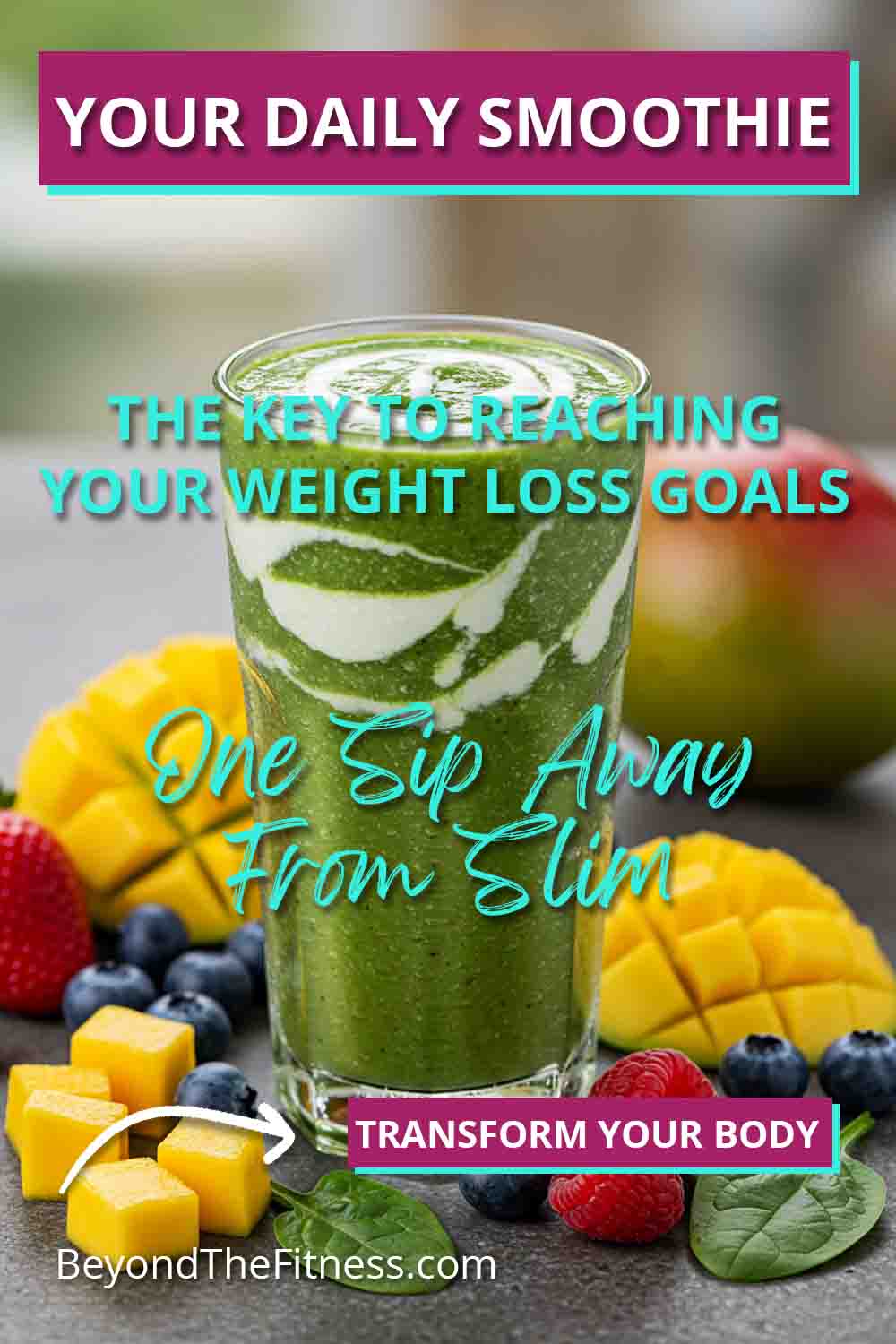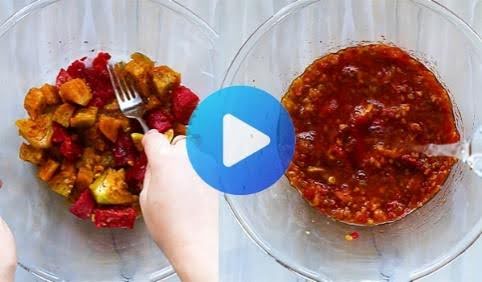Losing weight can feel like a big puzzle. You try different diets, workouts, and tips, hoping something clicks. What if one piece of that puzzle was something simple, tasty, and quick. Something like a daily smoothie. Now, I know what some of you might be thinking. Aren’t smoothies full of sugar and calories. They can be, but they don’t have to be. When made the right way, a smoothie can be a powerful tool in your weight loss journey, especially for us women.
I’ve worked with many clients who found success by adding smart smoothies into their routines. It’s not magic, but it’s a strategy that can make healthy eating easier and more effective. Let’s dive into why a daily smoothie might just be the key you’ve been looking for.
Why Smoothies Can Be Great for Weight Loss
It seems almost too easy, right. Blend up some fruits, veggies, and other goodies, and suddenly you’re on the path to weight loss. It’s not quite that simple, but there are solid reasons why smoothies work well for many people trying to shed pounds.
Packing in the Nutrients
One of the biggest wins for smoothies is nutrient density. This means you get a lot of vitamins, minerals, and good stuff packed into a relatively small volume. Think about it. Could you easily sit down and eat a cup of spinach, half an avocado, a scoop of protein powder, and a handful of berries all at once. Probably not comfortably. But blend them together, and you have a delicious drink that delivers all those nutrients in one go.
Getting enough nutrients is super important when you’re cutting calories for weight loss. You want to make sure your body still gets everything it needs to function well, keep your energy levels up, and support your metabolism. A well-built smoothie helps you do just that. It fills in nutritional gaps that might happen when you’re eating less.
The Power of Fiber
Fiber is your best friend when it comes to weight loss. It does a few amazing things. First, it helps you feel full. Fiber absorbs water and expands in your stomach, sending signals to your brain that you’re satisfied. This means you’re less likely to feel hungry soon after eating or reach for unhealthy snacks.
Second, fiber helps keep your digestion running smoothly. A healthy gut is linked to better weight management. Third, fiber helps control blood sugar levels. By slowing down the absorption of sugar into your bloodstream, it prevents those sharp spikes and crashes that can lead to cravings and energy slumps.
You can easily load up your smoothie with fiber-rich ingredients like leafy greens (spinach, kale), seeds (chia, flax, hemp), psyllium husk, and certain fruits (berries, apples with skin).
Controlling Calories Smartly
Weight loss fundamentally comes down to consuming fewer calories than you burn. Smoothies can make calorie control much easier, if you’re mindful about what goes into them. You measure the ingredients, so you have a good idea of the calorie count.
Unlike grabbing a pastry or a pre-packaged snack where calories can be surprisingly high and nutrients low, a homemade smoothie gives you complete control. You decide the portion size and the ingredients, making it easier to fit into your daily calorie goal without feeling deprived. A well-planned smoothie can replace a higher-calorie meal or snack, helping you create that necessary calorie deficit for weight loss.
Hydration Help
Staying hydrated is crucial for overall health and can also aid weight loss. Sometimes thirst is mistaken for hunger. Drinking enough fluids helps your metabolism work efficiently and can also contribute to feelings of fullness.
Many smoothie bases, like water, unsweetened plant milks, or even green tea, contribute to your daily fluid intake. Plus, the fruits and vegetables themselves contain water. So, sipping on a smoothie helps you stay hydrated, which is another small but significant way it supports your weight loss efforts.
The Convenience Factor
Let’s be real, life gets busy. Finding time to prepare healthy meals and snacks can be a challenge. This is where smoothies shine. They are incredibly quick and easy to make. Toss your ingredients in a blender, whiz it up for a minute, and you’re done. You can even prep ingredients ahead of time by portioning them into bags and freezing them.
This convenience makes it much easier to stick to your healthy eating plan, even on hectic mornings or when you need a fast post-workout refuel. When healthy eating is easy, you’re more likely to do it consistently.
Balancing Blood Sugar
Wild swings in blood sugar can sabotage weight loss efforts by causing intense cravings, energy crashes, and encouraging fat storage. Choosing the right smoothie ingredients helps keep your blood sugar stable.
Focusing on protein, healthy fats, fiber, and low-glycemic fruits (like berries) prevents the rapid sugar rush you’d get from a smoothie made mostly of high-sugar fruits or juices. Stable blood sugar means more consistent energy levels, fewer cravings, and a body that’s more efficient at burning fat.
Building the Perfect Weight Loss Smoothie: Your Blueprint
Okay, so we know why smoothies can work. Now let’s talk about how to build one that actually helps you lose weight, instead of accidentally packing on pounds. Think of this as your blueprint.
Step 1: Choose Your Liquid Base Wisely
The liquid base sets the stage for your smoothie’s calorie count and nutritional profile. Avoid sugary options.
- Best Choices: Water (zero calories), unsweetened almond milk (low calorie, often fortified with calcium and vitamin D), unsweetened soy milk (higher protein), unsweetened oat milk (creamy, check for added oils), cooled green tea (adds antioxidants).
- Use Sparingly or Avoid: Fruit juice (high in sugar, lacks fiber), sweetened plant milks, dairy milk (can be fine, but watch fat content if using whole milk), coconut water (natural sugars, use in moderation).
Start with about 1 cup (8 ounces) of liquid. You can always add more if needed to reach your desired consistency.
Step 2: Power Up with Protein
Protein is non-negotiable in a weight loss smoothie. It’s key for feeling full and satisfied, helping you eat less overall. It also helps preserve muscle mass while you lose fat, which is crucial because muscle burns more calories than fat, even at rest. Aim for 15-30 grams of protein per smoothie, especially if it’s replacing a meal.
- Protein Powders: Whey (fast-absorbing, great post-workout), casein (slow-digesting, good for staying full), plant-based blends (pea, rice, hemp, soy – good for vegans or those with dairy sensitivities). Choose powders with minimal added sugar.
- Other Sources: Plain Greek yogurt (high protein, probiotics), cottage cheese (high protein, creamy), tofu (silken tofu blends well), unsweetened soy milk (as part of the base).
Step 3: Fill Up with Fiber and Greens
This is where you load up on nutrients and filling power without adding many calories. Don’t be afraid of greens; you usually can’t taste them much when blended with other ingredients.
- Leafy Greens: Spinach (mild flavor), kale (stronger flavor, remove tough stems), romaine lettuce, Swiss chard. Start with a large handful and work your way up.
- Fiber Boosters: Chia seeds (1-2 tablespoons, thicken smoothie, omega-3s), flax seeds (1-2 tablespoons, grind them for better absorption, omega-3s), hemp seeds (protein and healthy fats), psyllium husk (start with 1 teaspoon, adds lots of fiber, drink plenty of water), oats (rolled oats add creaminess and soluble fiber).
Step 4: Add Healthy Fats (in Moderation)
Healthy fats are important for hormone health (especially for women), absorbing certain vitamins, and adding to satiety. However, fats are calorie-dense, so portion control is key. A little goes a long way.
- Good Choices: Avocado (1/4 to 1/2 small avocado adds creaminess and healthy fats), nut butters (1 tablespoon of almond, peanut, or cashew butter – choose natural varieties without added sugar or oils), seeds (chia, flax, hemp, pumpkin, sunflower – count towards fat too), coconut oil or MCT oil (1 teaspoon, can provide quick energy).
Pick just one main source of added fat per smoothie to keep calories in check.
Step 5: Include Fruit (the Right Kind and Amount)
Fruit adds natural sweetness, vitamins, and antioxidants. But it also contains sugar (fructose), so be mindful. Stick to lower-sugar options and limit the portion size, especially if weight loss is the primary goal. Using frozen fruit helps make the smoothie cold and thick without needing ice.
- Lower-Sugar Fruits: Berries (strawberries, blueberries, raspberries, blackberries – packed with antioxidants), peaches, plums, apples (keep the skin on for fiber), pears, cherries. Aim for 1/2 to 1 cup per smoothie.
- Higher-Sugar Fruits (Use Sparingly): Bananas (great for creaminess, use 1/2 small banana), mango, pineapple, grapes. These are fine occasionally or in smaller amounts, but relying on them heavily can increase the sugar and calorie load significantly.
Step 6: Boost Flavor Without Calories
Add extra taste without adding sugar or significant calories.
- Great Options: Cinnamon (helps regulate blood sugar), nutmeg, vanilla extract (pure, not imitation), unsweetened cocoa powder (for a chocolatey flavor), mint leaves, ginger (fresh grated), lemon or lime juice/zest.
What to Strictly Avoid in a Weight Loss Smoothie
- Added Sugars: Honey, maple syrup, agave nectar, table sugar, sweetened yogurts, flavored syrups. These add empty calories and spike blood sugar.
- Fruit Juice: As mentioned, it’s concentrated sugar without the beneficial fiber of whole fruit.
- Ice Cream or Frozen Yogurt: These turn your healthy smoothie into a high-calorie, high-sugar dessert.
- Sweetened Protein Powders: Read labels carefully; many powders contain artificial sweeteners or hidden sugars.
- Canned Fruit in Syrup: Stick to fresh or frozen fruit without added sugar.
- Too Much Fat: Going overboard on nut butter, avocado, coconut oil, or too many types of seeds can quickly make your smoothie a calorie bomb.
- Huge Portions: Stick to a reasonable size (around 16-20 ounces), especially if it’s a snack.
Smoothie Pitfalls: When Healthy Drinks Go Wrong
Smoothies have amazing potential, but it’s easy to fall into traps that turn them from weight loss aids into weight gain culprits. Being aware of these common mistakes is key.
The Hidden Sugar Trap
This is probably the biggest pitfall. You think you’re being healthy, but you’re actually consuming a lot of sugar. This happens when:
- Using Juice as a Base: Orange juice, apple juice, or other fruit juices add a significant sugar load right from the start.
- Overdoing High-Sugar Fruits: Loading up on bananas, mangoes, pineapples, and grapes can quickly increase the sugar content.
- Adding Sweeteners: Even “natural” sweeteners like honey, maple syrup, or agave are still added sugars and add calories.
- Using Sweetened Ingredients: Flavored yogurts, sweetened plant milks, and some protein powders contain hidden sugars.
Always read labels and prioritize whole, unsweetened ingredients. Let the natural sweetness of a small amount of low-sugar fruit be enough.
Accidental Calorie Bombs
While using healthy fats is good, they are very calorie-dense. It’s easy to go overboard.
- Too Much Nut Butter: A couple of tablespoons can add 200 calories or more.
- Too Much Avocado: A whole avocado can add 300+ calories.
- Combining Multiple Fats: Using avocado, chia seeds, and nut butter in the same smoothie can send the calorie count soaring.
- Giant Portions: Blending up a huge 32-ounce smoothie, even with healthy ingredients, can easily exceed the calories needed for a single meal or snack.
Measure your ingredients, especially fats and higher-calorie fruits, and be mindful of your total portion size relative to your daily calorie goals.
Not Enough Protein or Fiber
If your smoothie is mostly fruit and liquid, it might taste good, but it won’t keep you full for long. Without adequate protein and fiber, you’ll likely experience a blood sugar spike followed by a crash, leaving you hungry and craving more food shortly after. This defeats the purpose of using a smoothie for satiety and calorie control. Always ensure you have a good protein source and a fiber booster in your blend.
Drinking vs. Chewing
Sometimes, drinking calories doesn’t register the same way in our brains as eating solid food does. You can consume a 500-calorie smoothie much faster than you could eat a 500-calorie meal with whole ingredients. This can lead to consuming more calories than you realize without achieving the same level of satisfaction or fullness signals.
You Might Be Interested In: Learning more about The Complete Smoothie Detox & Weight Loss Program
Try to sip your smoothie slowly rather than gulping it down. Some people even find making their smoothie extra thick and eating it with a spoon (a smoothie bowl) helps them feel more satisfied. Pay attention to your body’s hunger and fullness cues.
Smoothies Tailored for Women’s Health Needs
While the basic principles of a weight loss smoothie apply to everyone, we women have some specific nutritional needs that smoothies can help address beautifully.
Iron Boost
Iron deficiency is quite common in women, especially during childbearing years, leading to fatigue and low energy. Leafy greens like spinach are great sources of plant-based iron. While plant-based iron isn’t absorbed as easily as iron from meat, you can enhance its absorption by pairing it with vitamin C. Luckily, many fruits used in smoothies (berries, citrus) are rich in vitamin C. A spinach and strawberry smoothie is a great combo for iron intake.
Calcium for Bone Health
Women are at higher risk for osteoporosis later in life, so getting enough calcium is vital. Smoothies offer easy ways to boost calcium.
- Use fortified unsweetened plant milks (almond, soy).
- Add plain Greek yogurt or cottage cheese.
- Include chia seeds.
- Blend in calcium-set tofu.
- Even leafy greens like kale contribute some calcium.
Folate Focus
Folate (or folic acid in fortified form) is crucial, particularly for women of childbearing age, as it helps prevent certain birth defects. It’s also important for overall cell growth. Leafy greens (spinach, romaine), avocado, and legumes (if using tofu or soy milk) are good sources you can easily add to smoothies.
Hormonal Harmony Helpers
Healthy fats and fiber play roles in maintaining hormonal balance.
- Healthy Fats: Fats from avocado, nuts, and seeds are building blocks for hormones. Getting enough healthy fat is essential for regular cycles and overall hormonal health.
- Fiber: Fiber helps regulate estrogen levels by binding to excess estrogen in the digestive tract and helping excrete it. This is particularly helpful for managing conditions related to estrogen dominance.
By including sources of healthy fats and fiber like flax seeds, chia seeds, avocado, and leafy greens, your smoothie can support better hormonal balance.
When Should You Have Your Smoothie?
Timing can make a difference in how your smoothie fits into your weight loss plan.
As a Meal Replacement (Breakfast or Lunch)
This is a popular option. If you’re replacing a meal, ensure your smoothie is nutritionally balanced and substantial enough to keep you full. This means it absolutely needs:
- A good protein source (20-30g).
- Plenty of fiber (greens, seeds).
- Healthy fats for satiety.
- A controlled amount of complex carbs (from low-sugar fruit or oats).
A well-built meal replacement smoothie should be around 300-500 calories, depending on your individual needs and overall daily calorie target. It’s perfect for busy mornings or a quick, healthy lunch.
For Post-Workout Recovery
After exercising, your muscles need protein to repair and rebuild, and carbohydrates to replenish energy stores (glycogen). A post-workout smoothie is ideal for delivering these nutrients quickly.
- Focus on easily digestible protein (like whey protein).
- Include some carbohydrates, potentially slightly more fruit than usual (like half a banana) or some oats, to help refuel muscles.
- Keep added fats lower immediately post-workout, as fat can slow down nutrient absorption.
Aim to have your recovery smoothie within 30-60 minutes after finishing your workout.
As a Healthy Snack
If you need something to tide you over between meals, a smaller smoothie can be a great choice. Keep the portion size smaller (maybe 8-12 ounces) and focus on protein and fiber to maximize satiety without adding excessive calories. A snack smoothie might be around 150-250 calories. It’s a much better option than reaching for chips, cookies, or sugary drinks.
Listen to your body and choose the timing that works best for your schedule, hunger levels, and workout routine.
Sample Weight Loss Smoothie Recipes
Here are a few ideas to get you started. Remember, these are just templates – feel free to adjust based on your preferences and what you have on hand, keeping the blueprint principles in mind. Amounts are approximate.
1. Green Goddess Power Smoothie
This one is packed with greens and healthy fats.
- Liquid: 1 cup unsweetened almond milk
- Protein: 1 scoop vanilla protein powder (whey or plant-based)
- Greens/Fiber: 1 large handful spinach, 1 tablespoon chia seeds
- Healthy Fat: 1/4 avocado
- Fruit: 1/2 cup frozen pineapple or peach chunks (for sweetness to balance greens)
- Flavor: Squeeze of lime juice (optional)
Why it works: High protein, good fiber, healthy fats for satiety, greens for nutrients. Pineapple/peach provides vitamin C and balances the green flavor.
2. Berry Blast Protein Smoothie
A classic, antioxidant-rich option.
- Liquid: 1 cup water or unsweetened soy milk
- Protein: 1 scoop plain or vanilla protein powder OR 1/2 cup plain Greek yogurt
- Greens/Fiber: 1 tablespoon flax seeds, handful of kale (optional)
- Healthy Fat: 1 tablespoon almond butter (optional, adds satiety)
- Fruit: 1 cup frozen mixed berries
- Flavor: Dash of cinnamon
Why it works: High protein, high fiber from berries and flax, antioxidants, low sugar from berries.
3. Chocolate Peanut Butter Craving Buster
Satisfies cravings the healthy way.
- Liquid: 1 cup unsweetened almond or oat milk
- Protein: 1 scoop chocolate protein powder
- Greens/Fiber: 1 handful spinach (you won’t taste it), 1 tablespoon chia seeds
- Healthy Fat: 1 tablespoon peanut butter powder (lower fat/cal) OR 1/2 tablespoon natural peanut butter
- Fruit: 1/4 to 1/2 frozen banana (for creaminess, adjust amount based on goals)
- Flavor: 1 tablespoon unsweetened cocoa powder (for richer chocolate flavor)
Why it works: High protein, satisfies chocolate/PB cravings with controlled calories/fat (especially using PB powder), fiber from chia/spinach.
4. Peachy Keen Fiber Smoothie
Focuses on fiber for fullness and gut health.
- Liquid: 1 cup water or cooled green tea
- Protein: 1/2 cup cottage cheese OR 1 scoop vanilla protein powder
- Greens/Fiber: 1 tablespoon psyllium husk (start lower if new to it), 1 tablespoon hemp seeds, 1/4 cup rolled oats
- Healthy Fat: (Hemp seeds provide some)
- Fruit: 1 cup frozen peach slices
- Flavor: Pinch of ginger or cinnamon
Why it works: Very high fiber content from psyllium, oats, and hemp. Good protein source. Peaches provide sweetness and vitamins. Great for digestion and staying full. Remember to drink extra water when consuming psyllium husk.
Feel free to mix and match ingredients based on the blueprint. The key is balance: protein, fiber, healthy fat (in moderation), low-sugar fruit, and nutrient-dense greens or boosters.
Beyond the Blend: Smoothies in Your Overall Plan
It’s important to remember that smoothies aren’t a magic potion. They are a tool, and like any tool, they work best when used correctly as part of a larger strategy.
Integrate, Don’t Isolate
Don’t rely solely on smoothies for your nutrition. Your body still needs whole, unprocessed foods. Continue eating balanced meals with lean proteins, plenty of vegetables, whole grains, and healthy fats. Use smoothies to supplement your diet, replace less healthy options, or make healthy eating more convenient, but not as your only source of food. Chewing food is also important for digestion and satisfaction signals.
Pair with Exercise
Weight loss is most effective when dietary changes are combined with regular physical activity. Exercise helps burn calories, build metabolism-boosting muscle, improve cardiovascular health, and manage stress. Find activities you enjoy, whether it’s walking, jogging, dancing, strength training, or yoga, and aim for consistency. A post-workout smoothie can be a great way to refuel after your sessions.
Listen to Your Body
Pay attention to how different smoothie combinations make you feel. Does a certain recipe keep you full until your next meal. Does another leave you feeling hungry sooner. Adjust ingredients and portion sizes based on your hunger, energy levels, and weight loss progress. Everyone’s body is different, so what works perfectly for one person might need tweaking for another.
Consistency is Crucial
Like any healthy habit, incorporating smoothies effectively takes consistency. Aim to have your planned smoothie regularly, whether it’s daily or a few times a week, depending on your goals and routine. Prepping ingredients ahead of time can make it much easier to stay consistent, even on busy days.
Think of your daily smoothie not as a quick fix, but as one component of a sustainable, healthy lifestyle that supports your weight loss goals and overall well-being. It’s about making smart choices consistently over time.
Related YouTube Video
For more ideas and visual guides on making healthy smoothies, you might find this video helpful:
Final Thoughts
Adding a well-crafted smoothie to your daily routine can genuinely be a helpful strategy on your weight loss journey. It’s a simple way to boost your intake of protein, fiber, and essential nutrients while controlling calories and keeping you feeling full. Remember the blueprint: prioritize protein and fiber, choose low-sugar fruits and liquids, include a small amount of healthy fat, and avoid hidden sugars and calorie bombs. Use smoothies as a tool within a balanced diet and active lifestyle, listen to your body, and stay consistent. It might just be the delicious key to unlocking progress towards your goals.







